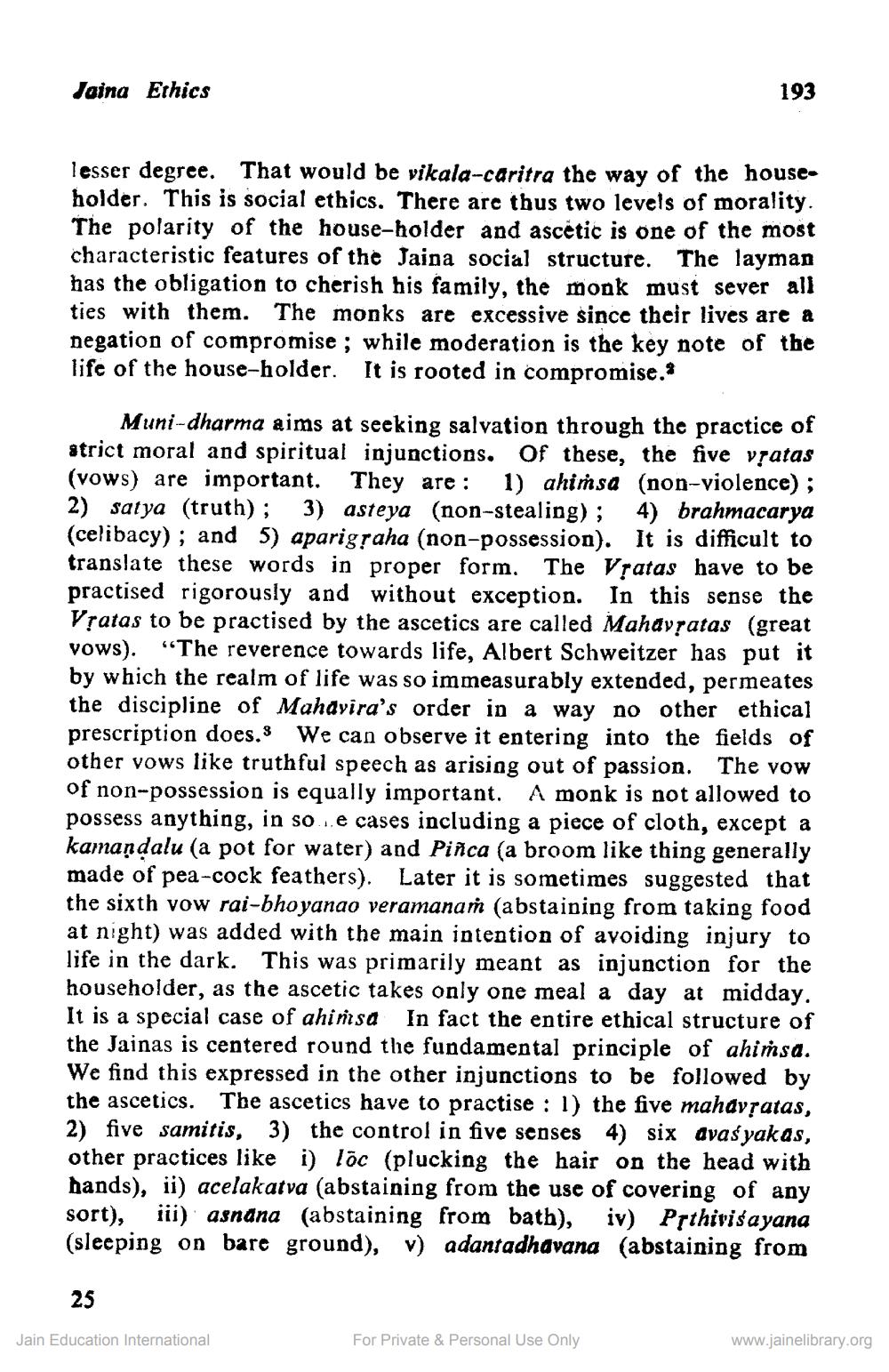________________
Jaina Ethics
193
lesser degree. That would be vikala-caritra the way of the householder. This is social ethics. There are thus two levels of morality. The polarity of the house-holder and ascetic is one of the most characteristic features of the Jaina social structure. The layman has the obligation to cherish his family, the monk must sever all ties with them. The monks are excessive since their lives are a negation of compromise ; while moderation is the key note of the life of the house-holder. It is rooted in compromise.*
Muni-dharma aims at seeking salvation through the practice of strict moral and spiritual injunctions. Of these, the five vşatas (vows) are important. They are: 1) ahimsa (non-violence); 2) satya (truth); 3) asteya (non-stealing); 4) brahmacarya (celibacy); and 5) aparigsaha (non-possession). It is difficult to translate these words in proper form. The Vșatas have to be practised rigorously and without exception. In this sense the Vğatas to be practised by the ascetics are called Mahavşatas (great vows). “The reverence towards life, Albert Schweitzer has put it by which the realm of life was so immeasurably extended, permeates the discipline of Mahavira's order in a way no other ethical prescription does. We can observe it entering into the fields of other vows like truthful speech as arising out of passion. The vow of non-possession is equally important. A monk is not allowed to possess anything, in so...e cases including a piece of cloth, except a kamandalu (a pot for water) and Pinca (a broom like thing generally made of pea-cock feathers). Later it is sometimes suggested that the sixth vow rai-bhoyanao veramanam (abstaining from taking food at night) was added with the main intention of avoiding injury to life in the dark. This was primarily meant as injunction for the householder, as the ascetic takes only one meal a day at midday. It is a special case of ahinsa In fact the entire ethical structure of the Jainas is centered round the fundamental principle of ahimsa. We find this expressed in the other injunctions to be followed by the ascetics. The ascetics have to practise :l) the five mahdvşatas, 2) five samitis, 3) the control in five senses 4) six avas yakas, other practices like i) loc (plucking the hair on the head with hands), ii) acelakatva (abstaining from the use of covering of any sort), iii) asnana (abstaining from bath), iv) Pythivisayana (sleeping on bare ground), v) adantadhavana (abstaining from
25
Jain Education International
For Private & Personal Use Only
www.jainelibrary.org




